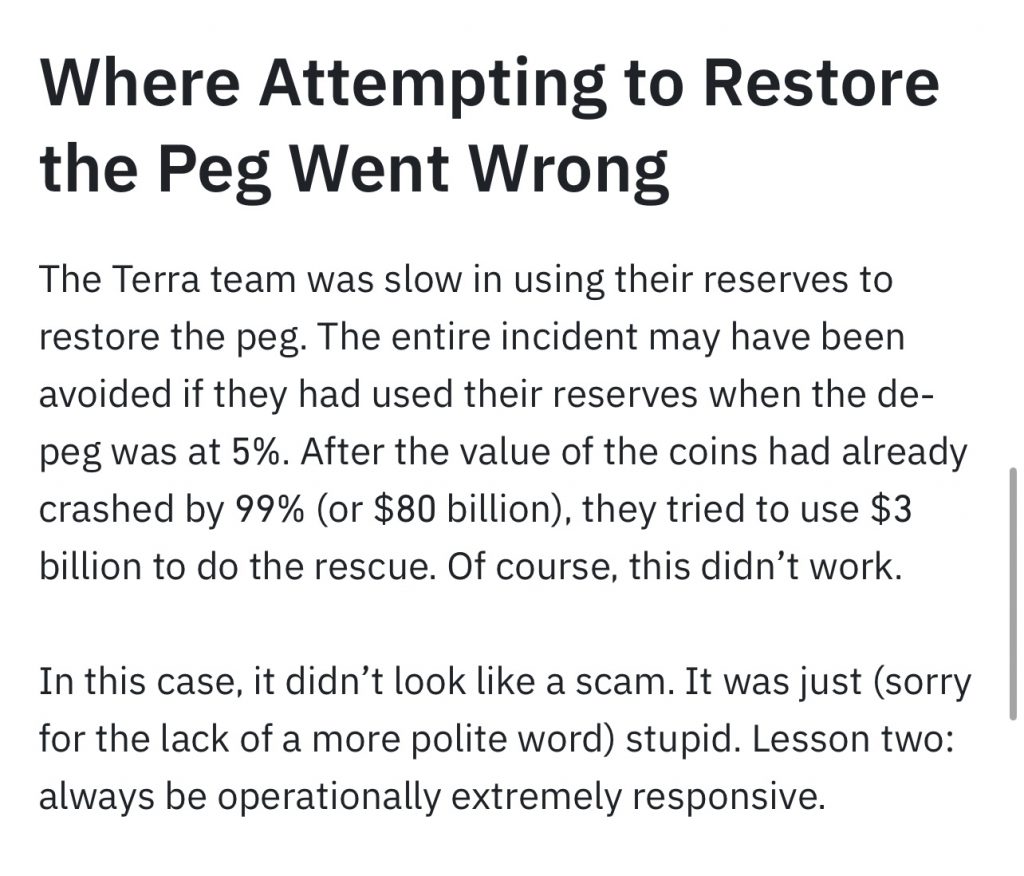Binance CEO, Changpeng Zhao, has continued to share his views on the recent crash of the Terra ecosystem.
In a recently published blog post, CZ noted that his focus was to protect affected users on his platform while highlighting that all proposed solutions to get Terra working again come with their flaws.
Binance CZ Highlights the Lessons
Speaking on the lessons he learned from the epic crash of Terra, CZ wrote that the first design flaw of LUNA was that the system could mint a limitless number of new tokens. In his view, “Printing money does not create value; it just dilutes existing holders.”
He continued that while Anchor’s 20% fixed incentive was used to push for growth, the LUNA team failed to generate “income” to sustain it.
CZ also pointed out that Terra did have a growing ecosystem with use cases; however, the rate at which the ecosystem grew was not matched with the incentives used to attract new investors. He described this kind of growth as “hollow” and advised investors to “don’t just chase high APY. Look at fundamentals.”
Failed Attempt to Restore UST Peg
According to the Binance CEO, the Terra team acted late in its attempt to restore the UST peg. He noted that the crash might have been averted if the team had used their Bitcoin reserve when the depeg was at 5%; instead, they waited till around $80 billion was wiped off the market before trying to restore parity with $3 billion –a decision he called stupid.


In his view, the Terra team’s lack of open communication channels with its community also eroded the trust investors had in them.
Changpeng Zhao also said that he has “mixed feelings about the revival plans provided by the Terra team.”
Conclusively, Terra’s crash sent “shockwaves” through the crypto industry, which can be seen in the early depeg of USDT alongside the fact that the value of Bitcoin crashed by as much as 20%.
However, regardless of all of this, the crypto industry remained resilient, and a regulator also said that more attention should be paid to algorithmic stablecoins going forward so as to avoid a recurrence of this in the future.





